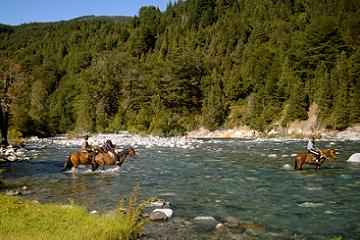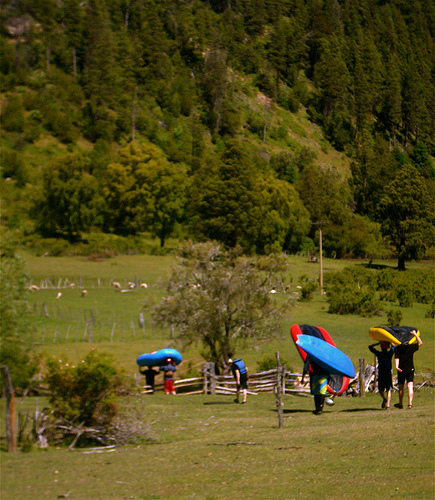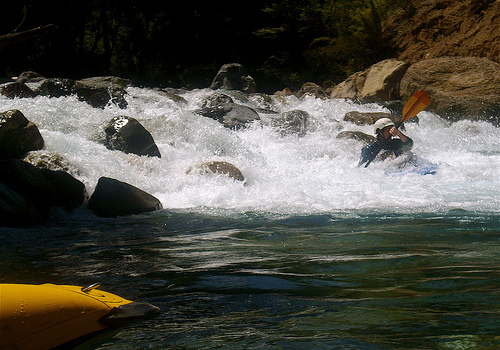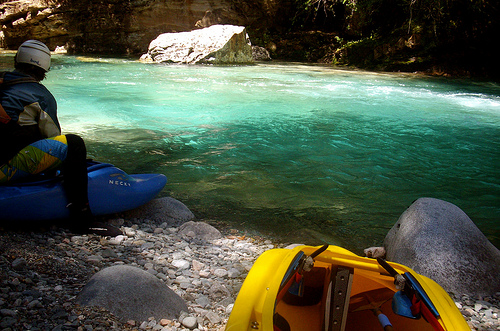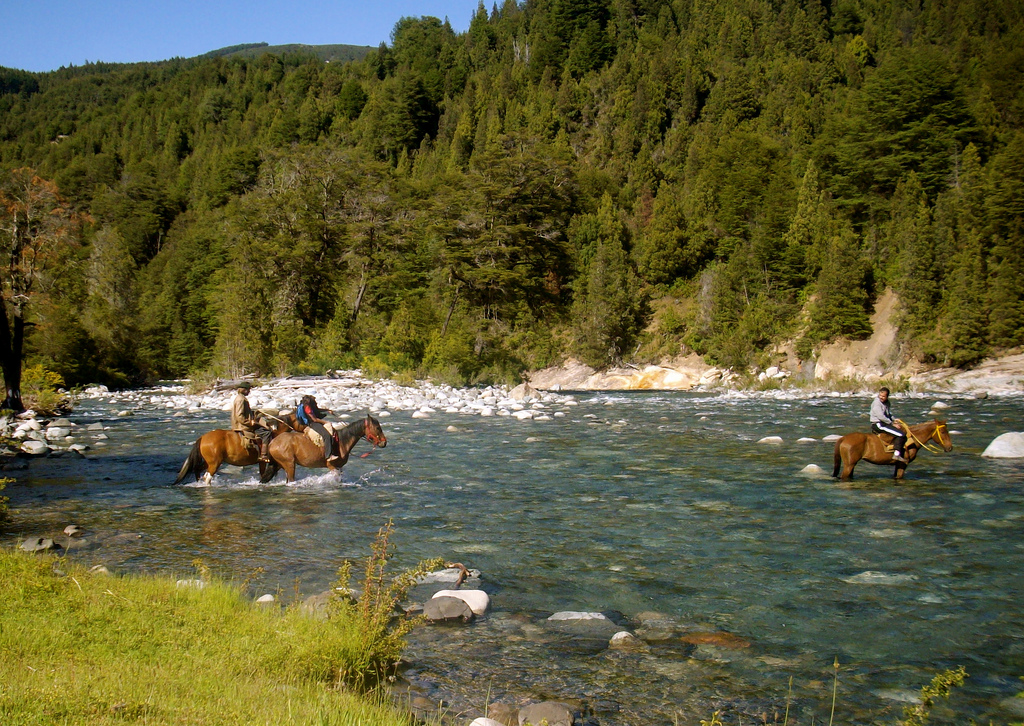
Rio Azul, just below confluence. All photos by David Miller.
SOMETIMES ALL IT TAKES is showing up. This occurred to me during the hike into the confluence of Rios Azul and Blanco near El Bolsón, Patagonia, pausing for a moment to rest the knees and study the terrain–the two rivers dropping out of steep notches in the cordillera, then joining in the valley where I could hear whitewater hundreds of meters below.
